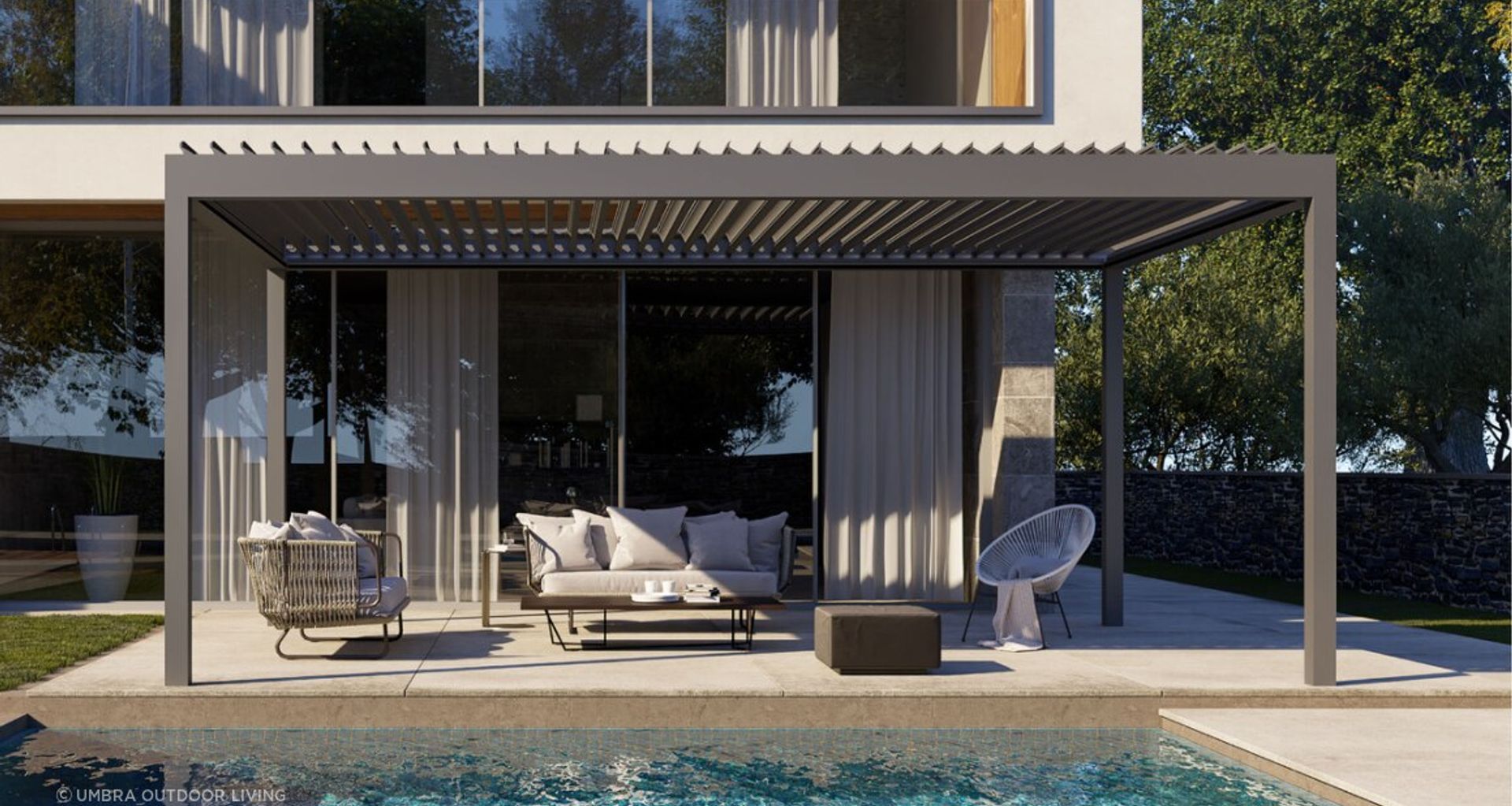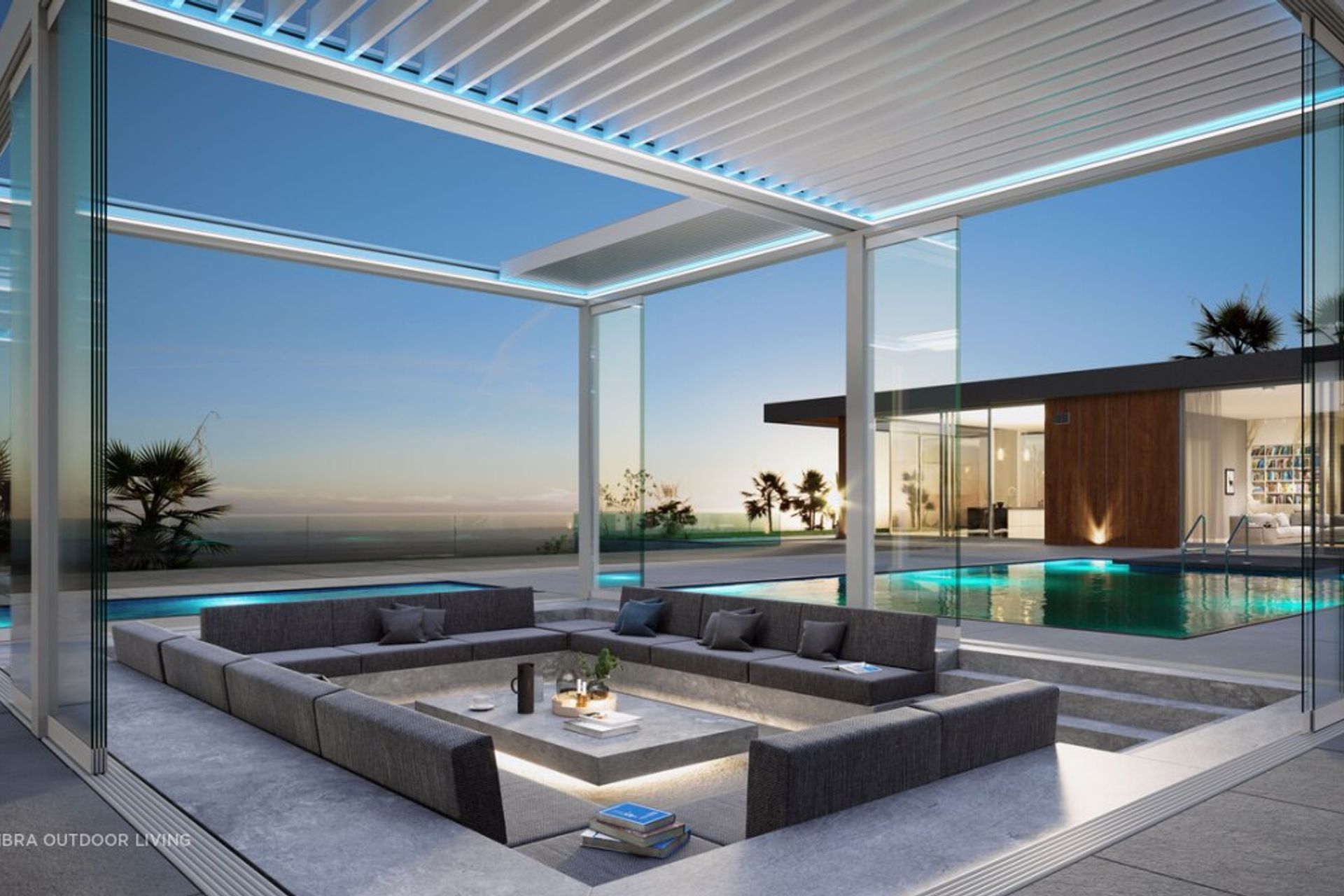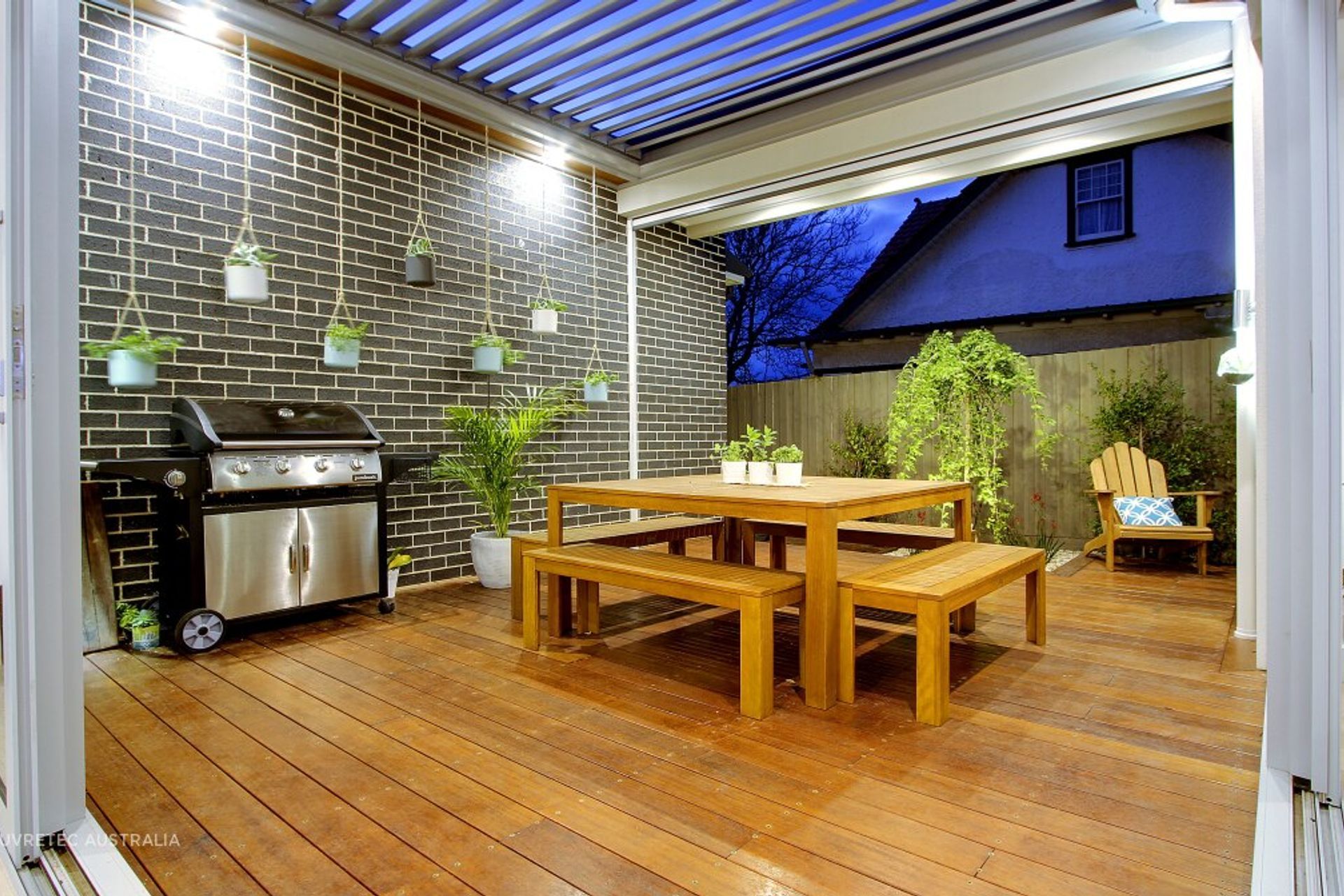Choosing the best outdoor shades for your home

While indoor shades are often a matter of design over function, the situation is quite different for outdoor shelter and shade systems. Outdoor shades need to provide protection above all but should also function as a complementary aesthetic asset. With temperatures in Australia on the upward trend, outdoor shades are becoming an increasingly important part of the outdoor living area.
With a vast range of products available, you can easily find a model that suits your needs, matches your home's style and complements the surrounding landscape.
Outdoor shades should minimise or even completely block out the sunlight over a given area. Depending on where you live, additional protection from the wind and rain might also be required. Homes with large windows or glass curtain walls can also benefit from privacy in the form of motorised outdoor blinds or retractable canopies.
With high-quality custom shelter and shade systems, you can transform your patio area into a relaxing outdoor living space. Your design can include a shelter all dressed up to keep the heat in during winter and the sun out during summer.
In this article, we’ll cover all the different types of outdoor and patio shades with everything you need to know about them including their ongoing care and maintenance requirements. There are some great deck shade ideas here so get ready to be inspired!

Things to know about retractable awnings
Retractable outdoor awnings offer convenient protection that can shade you from the intense sunlight during the day and let you enjoy a starry night later in the evening. It's an excellent solution for balconies since this kind of awning allows you to easily let more light inside. Retractable awnings also require no posts or poles, covering a sizable area while leaving all usable space unobstructed.
However, they are not the most affordable investment around, especially if motorised, also requiring professional installation. Retractable awnings are primarily intended as protection from the sun, so are not well suited to enduring harsh weather conditions like strong winds, heavy rain or snow.
Can retractable awnings withstand windy areas?
Retractable awnings are typically designed to withstand wind within certain limits. Because of this, it is always a good idea to check for a specific model’s wind rating. In general, it's advised to keep patio awnings retracted if the wind blows 30 kph or more. Some awnings can withstand wind speeds up to 40 kph but above this their structural integrity can become compromised.
How do you install and maintain retractable awnings and canopies?
Installation should be done professionally, although some manufacturers offer DIY instructions too. Estimating correct ground clearance is vital since you need to know the exact size of the area that needs coverage. The installation of mounting brackets should be sturdy and robust to minimise the impact of wind and increase longevity. The hood is then attached before the assembled awning is fixed to the wall.
Regular maintenance involves a thorough annual cleaning with a soft brush using mild soap in lukewarm water. Additionally, it's advised that you rinse your awning down once a month with a garden hose, cleaning the underside with a household broom.
It’s also a good idea to keep any nearby foliage trimmed away or to a minimum, as many plants contain acid that can damage the fabric. Finally, make sure to regularly check awning frames for rust especially if you live near coastal locations, as it can cause deterioration of the structure and also lead to staining of the fabric.
Related article: Retractable awnings - pros and cons, costs and more

What you should know about gazebos
What is a gazebo?
A gazebo is a freestanding outdoor covered structure, open on all sides, that can be either permanent or portable. Permanent gazebos are typically made of wood or composite materials, attractively designed to provide aesthetic value to the garden. However, they can also be quite expensive, especially with added accessories. Portable gazebos, also known as pop-up gazebos, semi-permanent gazebos and camping shelters, are practical and more affordable but are often less attractive than permanent models.
How to install and maintain gazebos
A portable gazebo can be installed anywhere which is why they are so appealing to many. A permanent gazebo requires a solid, usually concrete, foundation. Its structure consists of posts, beams and a roof with rafters. A square top is the most straightforward option with the traditional hexagonal or even octagonal roof requiring more effort. Some gazebo kits also feature a two-tiered roof, cupola, and railing panels.
Maintenance of the gazebo depends on the structure type and materials. Plastic and composite materials require only periodic sweeping and annual cleaning, using warm water and mild soap. Wooden structures also need painting, staining, and specific treatments with a clear waterproof seal every few years.
Things to know about opening louvre roofs
What is a louvre roof?
The opening roof over your deck or patio can be an attractive and practical solution, depending on the climate and wind zone you live in. Opening louvre roofs are durable solutions, usually made from wood or aluminium. The blades of a louvre roof can be flat underneath when closed or feature a soft curve. It's possible to have a translucent opening roof made of plexiglass that offers natural UV protection while allowing light to flow through.
How to install and maintain opening louvred roofs
Before installation, you need to take into consideration the area, as well as additional facilities like existing frames and supports. Based on the orientation of your outdoor space, you will be able to decide how the blades will be opening. The louvre blades of a manual roof are operated by a lever. Automatic opening roofs can be operated with the touch of a button, by remote control or even in some cases by using an app.
A thorough semi-annual cleaning of the louvre blades is highly recommended to keep them in good condition. If you live in a coastal area, it’s advisable to do this more regularly, for example, every three months. Dry brushing followed by warm water and mild soap will be more than adequate for this.
Related article: Why a louvred pergola system is a game-changer

What you should know about outdoor blinds
How to choose outdoor blinds?
There is a wide range of outdoor blinds in the market but there are two crucial factors that can help you determine which outdoor blinds to choose. Outdoor blinds have a significant impact on kerb appeal and can elevate or ruin the aesthetic of the property. The design, type and size are all crucial with respect to this.
The other factor is the quality of sun protection for both you and the furniture in your living area. While PVC material shelters from the wind and rain, it's not the most convenient solution for hot days. Canvas is very effective at blocking the sun offering excellent UV protection while mesh is the most versatile middle-ground solution.
How to maintain outdoor patio blinds
Maintenance of outdoor patio blinds comprises regular dusting and occasional cleaning with a soft cloth, cold water and mild detergent. Avoid harsh chemicals and high-pressure cleaners as those can damage the fabric sometimes beyond repair.

Things to know about outdoor umbrellas
Outdoor umbrellas represent the most effortless form of temporary shading solutions around. A garden umbrella will provide shade precisely where you want it while adding a touch of flair to your landscape. There are several different kinds of outdoor umbrellas, including sunshades, pagodas, cantilever umbrellas and special types used in commercial environments. Commonly used materials include canvas, vinyl mesh and even straw or thatch for a rustic look.
How to install and maintain outdoor umbrellas
Most patio umbrellas measure between 1.5m and 4m in diameter. Many are placed into a hole in your outdoor dining table while others are kept upright by a heavy weighted base. A crank at the top of the shaft allows you to raise or lower the umbrella canopy as desired.
Monthly maintenance is recommended, in the form of washing with a mild soap solution and allowing it to dry naturally.

What you should know about privacy screens
Affordable and effortless to install, sail screens are an attractive way of achieving privacy from curious eyes and giving protection from harmful UV rays in outdoor areas. They come with a variety of options, including different angles, designs and posts. Shade Sails style garden screening also makes an attractive option as a multifunctional lightweight shell as a patio cover or around entertainment areas.
Bamboo panels make another great solution as privacy and shade screens, best used as freestanding panels or partitions between two gardens. Their sustainable design merges with the environment and can even help to cover an unsightly garden feature. Paired with a liner, bamboo screens also provide insulation against heat and cold.
How to install and maintain privacy and garden screens
Sail shade privacy screens feature a flexible membrane, usually made out of a variety of water-resistant or waterproof fabrics, tightened between several anchor points. Bamboo panels for garden screens can be tightened to a wall, stretched between two columns, or left freestanding in areas without strong winds.
Maintenance is easily done with a spray cleaning solution. A quick brush, rinse and natural drying and it’s all done.

Choosing the best outdoor shade is easy
As you can see there are some great outdoor shade ideas, that can work very well as an outdoor, garden or patio shade. Choosing the right one for you depends on factors like your budget, location and stylistic preferences. If you want something comfortable to install and maintain, opt for privacy screens or garden umbrellas. On the other hand, if you prefer an alluring, permanent asset to the landscape, building a gazebo makes for a great solution. Alternatively, retractable awnings provide flexibility of use without occupying the floor or seating areas.
Other things to bear in mind are that darker coloured fabrics provide glare control and visibility, while the lighter ones are more effective in repelling heat. Certain materials are also more efficient in blocking damaging UV rays than others. Finally, if you're not a fan of manual adjustments, treat yourself to motorised shades operated by a wireless remote control or app.
Whatever your choice, your outdoor sun shade will provide you with great protection from UV rays and offer invaluable respite from the hot sun giving you a functional and enjoyable space to relax in at your leisure.
